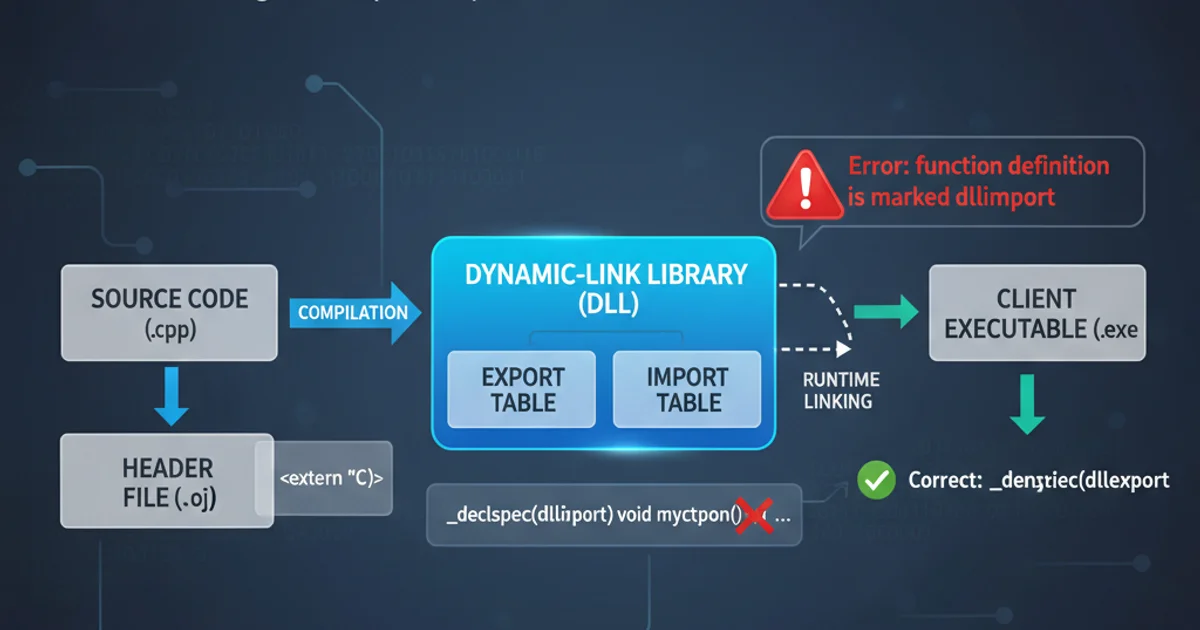How do I use 3DES encryption/decryption in Java?
Categories:
Implementing 3DES Encryption and Decryption in Java

Learn how to securely encrypt and decrypt data using the Triple DES (3DES) algorithm in Java, covering key generation, cipher initialization, and best practices.
Triple DES (3DES) is a symmetric-key block cipher, which applies the DES algorithm three times to each data block. While largely superseded by AES for new applications due to its smaller key size and slower performance, 3DES remains relevant in legacy systems and specific compliance requirements. This article will guide you through the process of implementing 3DES encryption and decryption in Java, including key generation, cipher initialization, and handling common pitfalls.
Understanding 3DES Key Requirements
3DES typically uses a 168-bit key (three 56-bit DES keys, with 8 parity bits each, totaling 64 bits per key). However, it's often represented as a 24-byte (192-bit) key where the last 8 bytes are a repeat of the first 8 bytes, or all three keys are distinct. Java's SecretKeyFactory for 3DES expects a 24-byte key. It's crucial to generate or derive these keys securely.
import javax.crypto.KeyGenerator;
import javax.crypto.SecretKey;
import javax.crypto.spec.SecretKeySpec;
import java.security.NoSuchAlgorithmException;
import java.util.Base64;
public class TripleDESKeyGenerator {
public static SecretKey generate3DESKey() throws NoSuchAlgorithmException {
KeyGenerator keyGen = KeyGenerator.getInstance("DESede"); // DESede is the algorithm name for 3DES
keyGen.init(168); // 168 bits for 3DES key strength
return keyGen.generateKey();
}
public static SecretKey create3DESKeyFromBytes(byte[] keyBytes) {
// For 3DES, keyBytes must be 24 bytes long
if (keyBytes.length != 24) {
throw new IllegalArgumentException("3DES key must be 24 bytes long.");
}
return new SecretKeySpec(keyBytes, "DESede");
}
public static void main(String[] args) throws NoSuchAlgorithmException {
SecretKey key = generate3DESKey();
System.out.println("Generated 3DES Key (Base64): " + Base64.getEncoder().encodeToString(key.getEncoded()));
// Example of creating a key from a known byte array (e.g., loaded from storage)
byte[] knownKeyBytes = Base64.getDecoder().decode("YOUR_24_BYTE_BASE64_KEY_HERE="); // Replace with actual 24-byte key
SecretKey loadedKey = create3DESKeyFromBytes(knownKeyBytes);
System.out.println("Loaded 3DES Key (Base64): " + Base64.getEncoder().encodeToString(loadedKey.getEncoded()));
}
}
Generating a 3DES key using KeyGenerator and creating one from a byte array.
Implementing 3DES Encryption and Decryption
The core of 3DES encryption and decryption in Java involves the Cipher class. You'll need to specify the algorithm, mode, and padding scheme. Common choices are DESede/CBC/PKCS5Padding or DESede/ECB/PKCS5Padding. Cipher Block Chaining (CBC) mode requires an Initialization Vector (IV) for security, which should be unique and random for each encryption operation, but does not need to be secret. Electronic Codebook (ECB) mode is generally discouraged as it can reveal patterns in encrypted data.
flowchart TD
A[Start] --> B{Generate/Load 3DES Key}
B --> C{Generate Random IV (for CBC)}
C --> D[Initialize Cipher for ENCRYPT_MODE]
D --> E[Encrypt Data]
E --> F[Combine IV + Encrypted Data]
F --> G[Store/Transmit]
G --> H{Receive IV + Encrypted Data}
H --> I{Extract IV}
I --> J{Load 3DES Key}
J --> K[Initialize Cipher for DECRYPT_MODE with IV]
K --> L[Decrypt Data]
L --> M[End]Flowchart of 3DES Encryption and Decryption Process
import javax.crypto.Cipher;
import javax.crypto.SecretKey;
import javax.crypto.spec.IvParameterSpec;
import javax.crypto.spec.SecretKeySpec;
import java.security.SecureRandom;
import java.util.Base64;
public class TripleDESEncryptor {
private static final String ALGORITHM = "DESede";
private static final String TRANSFORMATION = "DESede/CBC/PKCS5Padding"; // Using CBC mode with PKCS5Padding
// Encrypts data using 3DES with a given key and generates a random IV
public static byte[] encrypt(byte[] data, SecretKey key) throws Exception {
Cipher cipher = Cipher.getInstance(TRANSFORMATION);
SecureRandom random = new SecureRandom();
byte[] ivBytes = new byte[cipher.getBlockSize()];
random.nextBytes(ivBytes);
IvParameterSpec ivSpec = new IvParameterSpec(ivBytes);
cipher.init(Cipher.ENCRYPT_MODE, key, ivSpec);
byte[] encryptedData = cipher.doFinal(data);
// Prepend IV to the encrypted data for transmission/storage
byte[] combined = new byte[ivBytes.length + encryptedData.length];
System.arraycopy(ivBytes, 0, combined, 0, ivBytes.length);
System.arraycopy(encryptedData, 0, combined, ivBytes.length, encryptedData.length);
return combined;
}
// Decrypts data using 3DES with a given key and the IV extracted from the data
public static byte[] decrypt(byte[] combinedData, SecretKey key) throws Exception {
Cipher cipher = Cipher.getInstance(TRANSFORMATION);
int ivSize = cipher.getBlockSize();
// Extract IV from the combined data
byte[] ivBytes = new byte[ivSize];
System.arraycopy(combinedData, 0, ivBytes, 0, ivSize);
IvParameterSpec ivSpec = new IvParameterSpec(ivBytes);
// Extract actual encrypted data
byte[] encryptedData = new byte[combinedData.length - ivSize];
System.arraycopy(combinedData, ivSize, encryptedData, 0, encryptedData.length);
cipher.init(Cipher.DECRYPT_MODE, key, ivSpec);
return cipher.doFinal(encryptedData);
}
public static void main(String[] args) throws Exception {
// 1. Generate a 3DES key
SecretKey key = TripleDESKeyGenerator.generate3DESKey();
System.out.println("Generated Key (Base64): " + Base64.getEncoder().encodeToString(key.getEncoded()));
// 2. Data to encrypt
String originalText = "This is a secret message to be encrypted with 3DES.";
System.out.println("Original Text: " + originalText);
// 3. Encrypt the data
byte[] encryptedCombined = encrypt(originalText.getBytes("UTF-8"), key);
String encryptedBase64 = Base64.getEncoder().encodeToString(encryptedCombined);
System.out.println("Encrypted Data (Base64): " + encryptedBase64);
// 4. Decrypt the data
byte[] decryptedBytes = decrypt(encryptedCombined, key);
String decryptedText = new String(decryptedBytes, "UTF-8");
System.out.println("Decrypted Text: " + decryptedText);
// Verify decryption
if (originalText.equals(decryptedText)) {
System.out.println("Encryption and Decryption successful!");
} else {
System.out.println("Error: Decrypted text does not match original.");
}
}
}
Complete example for 3DES encryption and decryption using CBC mode.
DESede/ECB/PKCS5Padding is generally insecure for most applications because it encrypts identical plaintext blocks into identical ciphertext blocks, making it vulnerable to pattern analysis. Always prefer CBC or CTR modes with a unique IV for each encryption.Handling Key Storage and Security
The security of your encrypted data hinges entirely on the security of your encryption key. Never embed keys directly in your code. For production environments, consider these options:
- Java KeyStore (JKS/PKCS12): A standard way to store cryptographic keys and certificates. It provides a secure, password-protected container.
- Environment Variables: For application configuration, though less secure than a dedicated key store.
- Hardware Security Modules (HSMs): For high-security applications, HSMs provide tamper-resistant storage and cryptographic processing.
- Key Derivation Functions (KDFs): If a key needs to be derived from a password, use a strong KDF like PBKDF2 to generate a sufficiently long and random key.